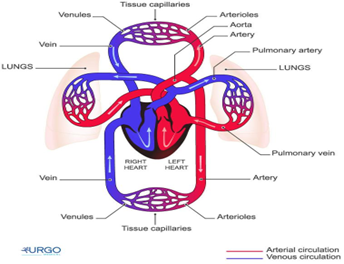A parent tells a nurse that her toddler drinks a quart of milk a day and has a poor appetite for solid foods. The nurse should explain that the toddler is at risk for which of the following disorders?
Obesity
Diabetes mellitus
Iron deficiency anemia
Rickets
The Correct Answer is C
Consuming a large amount of milk, such as a quart a day, can lead to iron deficiency anemia in toddlers. Milk is a poor source of iron, and excessive milk intake can displace other iron-rich foods from the toddler's diet.
Iron deficiency anemia occurs when the body lacks sufficient iron to produce enough hemoglobin, which is essential for oxygen transport in the blood. Toddlers are particularly vulnerable to iron deficiency anemia because they have increased iron needs for growth and development.
Option A (Obesity) and option B (Diabetes mellitus) are not directly related to the toddler's milk consumption. Obesity may be a concern if the child consumes excessive calories overall, but it is not specifically associated with milk intake. Similarly, diabetes mellitus is not directly related to milk consumption.
Option D (Rickets) is caused by a deficiency of vitamin D, not iron. Rickets results in weakened and deformed bones, and it is usually associated with inadequate sunlight exposure and insufficient dietary vitamin D. While milk is often fortified with vitamin D, excessive milk intake can displace other vitamin D sources in the diet and contribute to an increased risk of rickets, but the primary concern with excessive milk intake is iron deficiency anemia.
Nursing Test Bank
Naxlex Comprehensive Predictor Exams
Related Questions
Correct Answer is A
Explanation
The nurse should recommend bananas as a safe food choice for a 2-year-old child. Bananas are soft and easy to chew, making them safe for young children. They do not pose a choking hazard, unlike grapes, raw carrots, or celery.
Option B (Grapes) can be a choking hazard for young children, especially if they are not cut into small pieces or are given whole.
Option C (Raw carrots) and Option D (Celery) are hard and crunchy, and they require more chewing, which may not be safe for a 2-year-old child who is still developing their chewing and swallowing abilities.
As a general guideline, when selecting foods for young children, it is essential to choose soft, easily chewable, and non-choking hazard options to promote safe eating and reduce the risk of choking incidents.
Correct Answer is C
Explanation
A. Gastrointestinal:
Kawasaki disease primarily affects blood vessels, and the gastrointestinal system is not the main target of this condition. While gastrointestinal symptoms can occur as part of the overall inflammatory response, such as abdominal pain, vomiting, or diarrhea, they are not the primary focus of concern in Kawasaki disease. The most critical system to monitor in Kawasaki disease is the cardiovascular system, specifically the coronary arteries.
B. Respiratory:
The respiratory system is not the primary system affected by Kawasaki disease. While respiratory symptoms can occur as part of the overall inflammatory response and fever associated with the disease, such as coughing or runny nose, they are not the main concern in Kawasaki disease. The primary system to monitor in this condition is the cardiovascular system, especially the coronary arteries.
C. Cardiovascular:
This is the correct answer. Kawasaki disease is primarily a vasculitis (inflammation of blood vessels) that affects various blood vessels, including the coronary arteries. The inflammation of the coronary arteries can lead to coronary artery aneurysms and other cardiac complications. Monitoring the cardiovascular system is essential to detect any signs of coronary artery involvement and ensure timely intervention to prevent potential long-term cardiac problems.
D. Integumentary:
The integumentary system (skin) is not the primary focus of Kawasaki disease. While some skin changes can occur during the acute phase of the disease, such as a rash or peeling skin on the hands and feet, these are not the primary concerns. Monitoring the cardiovascular system is critical in Kawasaki disease due to the risk of coronary artery inflammation and potential complications.

Whether you are a student looking to ace your exams or a practicing nurse seeking to enhance your expertise , our nursing education contents will empower you with the confidence and competence to make a difference in the lives of patients and become a respected leader in the healthcare field.
Visit Naxlex, invest in your future and unlock endless possibilities with our unparalleled nursing education contents today
Report Wrong Answer on the Current Question
Do you disagree with the answer? If yes, what is your expected answer? Explain.
Kindly be descriptive with the issue you are facing.
